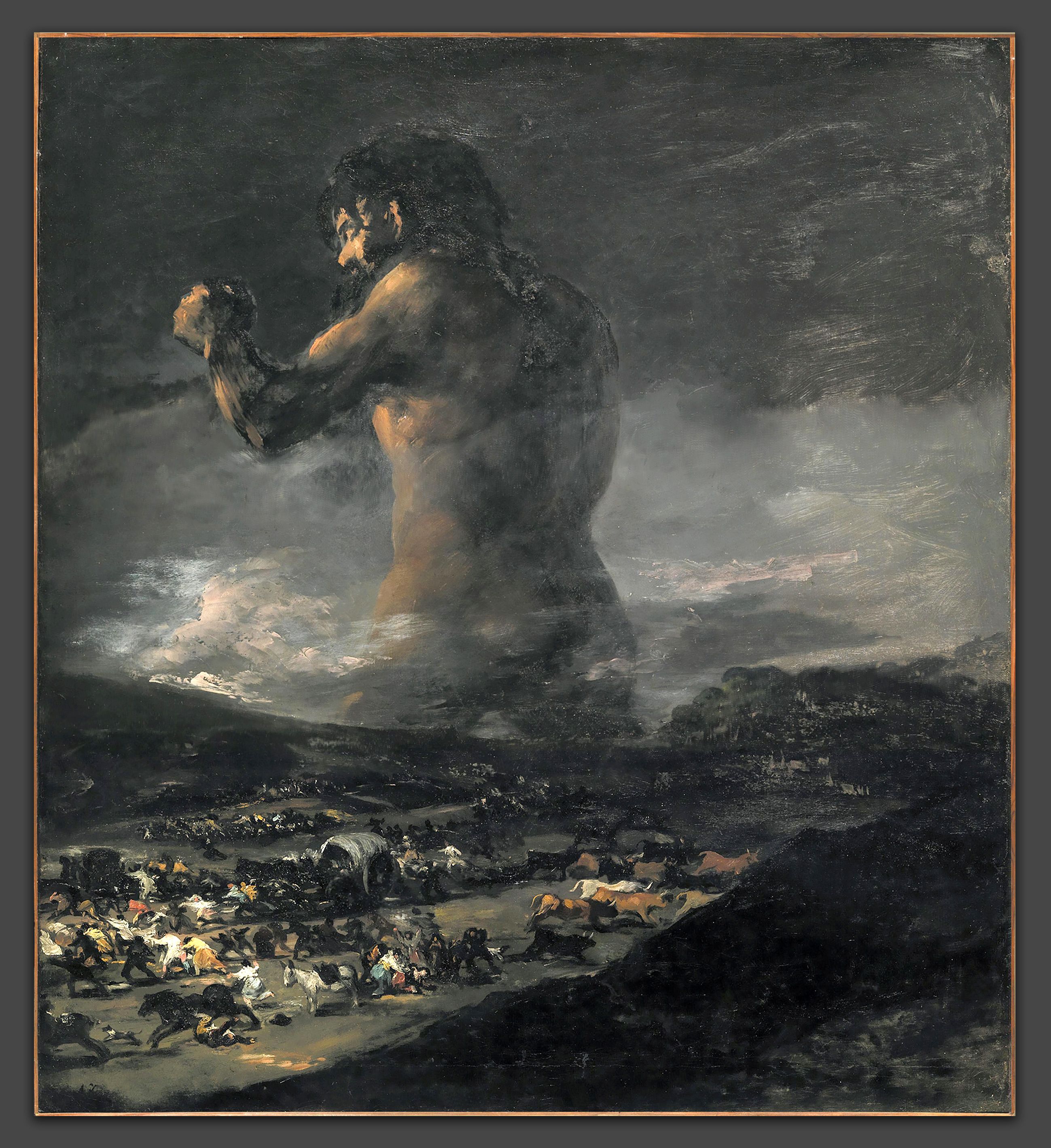
The Colossus, one of the world’s best-known paintings, has again been attributed to the Spanish artist Francisco Goya, with the Museo del Prado in Madrid quietly restoring his name to the work 13 years after it stripped it from the picture.
Curators at the museum, who for years have said it was a studio work done by an apprentice, now say it is “attributed to Goya,” thereby stopping short of calling it an autograph work.
The phrasing was chosen to “reflect ongoing debate around the origin of the painting,” an anonymous source at the museum told the Independent.
The work’s authorship has been in doubt for over a decade, since Manuela Mena, the museum’s Goya expert, declared in 2008 that “this work is a botched job” by Asensio Julia, an obscure apprentice of the Spanish master. Mena claimed that the initials “A.J.” were present in the corner of the painting.
But that change has always had its critics, and some are now saying that the museum’s recent change of heart is itself an issue.
In El Diario, the art historian Peio H. Riaño wrote that the museum restored Goya’s name “without giving any explanation, taking advantage of the presentation of its reorganization to sneak it in without making a sound.”
Photo by Donations_are_appreciate, Creative Commons Zero CC0 1.0 Universal Public Domain Dedication license.
For years, The Colossus was believed to have been painted between 1818 and 1825 as Goya’s response to the French occupation of Spain after Napoleon’s victory in the Peninsular War. The giant looming over the landscape is said to represent Spanish efforts to expel the occupying force.
Donated by the estate of Pedro Fernández Durán, it has been part of the Prado collection since 1931. An inventory of the estate of Josefa Bayeu, Goya’s wife, when she died in 1812, lists a painting referred to as The Giant that is the same size as The Colossus.
The Goya attribution has nonetheless been questioned since 1992, when restoration work on the picture was completed. But removing the label identifying the painting as by Goya’s hand was immediately controversial.
When Mena retired in 2018, other Prado experts were eager to restore the original attribution, according to the Times of London.
Francisco Goya, Seated Giant (ca. 1814–18). Courtesy of the Metropolitan Museum of Art.
A recent Goya print exhibition, “Goya’s Graphic Imagination” at the Metropolitan Museum of Art in New York, featured Seated Giant, a Goya aquatint print closely related to The Colossus, using it as its promotional image.
Mark McDonald, the Met exhibition’s curator acknowledged that “there is no consensus” regarding the authorship of The Colossus, but noted “there is growing support for it to be returned to Goya.”
“If the painting is a studio work, then the artist borrowed the figure of Colossus from Goya’s print,” McDonald wrote on the museum website. “Given his imagination and originality, it seems highly unlikely that Goya would borrow the figure from someone else’s painting to use as the basis for his print.”
The Prado declined to comment to Artnet News, but a museum spokesperson told the Independent that “we have changed the attribution as part of a reorganization of 19th-century works. It seemed the right time to do this to reflect the ongoing debate over the authorship of the work, but we are not saying it was by Goya.”